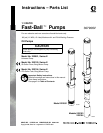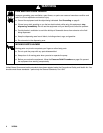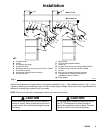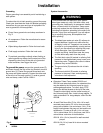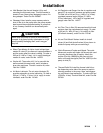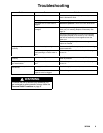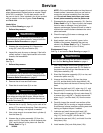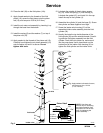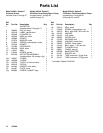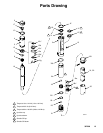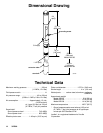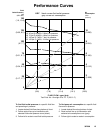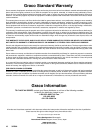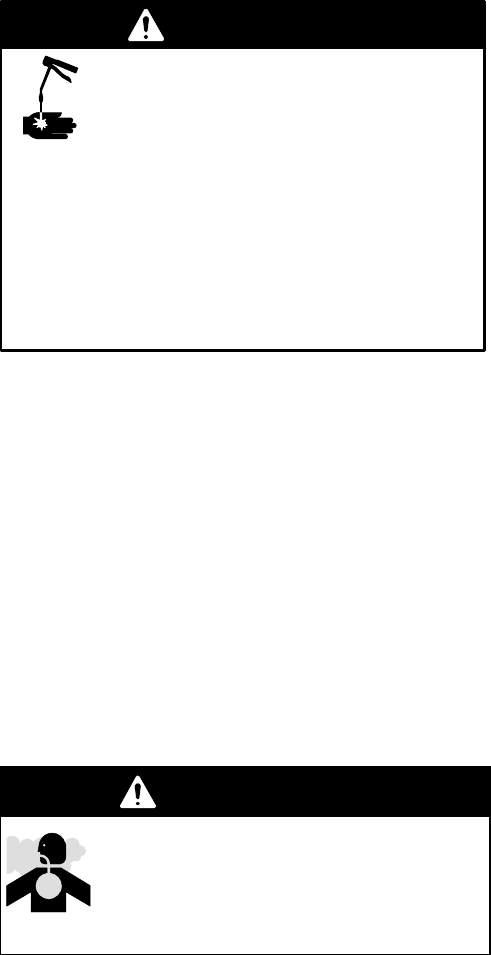
8 307906
Operation
Pressure Relief Procedure
PRESSURIZED FLUID HAZARD
This equipment stays pressurized until
pressure is manually relieved. To reduce
the risk of serious injury from moving
parts, pressurized fluid, accidental spray from the
valve, or splashing fluid, follow this procedure
whenever you do any of the following:
D Are instructed to relieve pressure
D Stop dispensing
D Check, clean, or service any system equipment
D Install or clean dispensing devices
WARNING
1. Shut off the air supply to the pump.
2. Close the bleed-type master air valve (required in
your system).
3. Hold a metal part of the dispensing valve firmly to
a grounded metal waste container, and trigger the
valve to relieve pressure.
If you suspect that the nozzle or hose is completely
clogged, or that pressure has not been fully relieved
after you have followed the steps above, do the follow-
ing: Wrap a rag around the hose end coupling and
relieve pressure gradually by very slowly partially
loosening the fitting. Then loosen completely, then
clear the obstruction.
WARNING
HAZARDOUS VAPORS
The air motor exhaust coming out of the
muffler could contain harmful materials,
such as oil, antifreeze, or some of the
material being pumped.
To Start the Pump
1. Turn the air regulator to the minimum setting.
2. Direct the outlet hose into a waste container.
3. Open the bleed-type master air valve.
4. Slowly adjust the air regulator until the pump is
running smoothly and all air has been pumped out
of the pump and hoses. If the pump contains
solvent, be sure to pump it all into the waste
container.
5. Use the air regulator to control the pump speed
and cycle rate. Always use the lowest pressure
needed to obtain the desired results. This results
in optimum system efficiency and reduces pump
wear.
NOTES:
D The pump only takes a few strokes to prime. How-
ever, in a large system, it may take several minutes
to completely prime the fluid lines.
D Never allow a pump to run dry of the fluid being
pumped. A dry pump quickly speeds up and can
damage itself. If it speeds up, shut off the air supply
to the motor immediately. Refill the supply con-
tainer, and prime the pump to eliminate air in the
fluid line.
D To prevent air from being sucked into the pump and
fluid lines if the supply container runs dry, use a
low-level cutoff valve at the pump intake. To order a
1 1/2-in. npt(f) thread connection low-level cutoff
valve, Order Part No. 203688.



